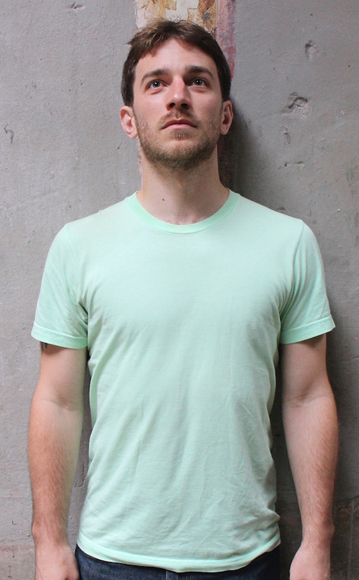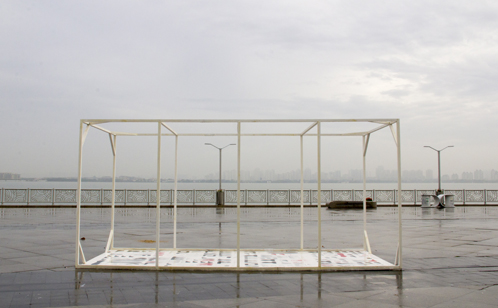Scott Harber

Scott Harber is a practicing artist currently residing in Toronto, Ontario. He holds a BFA from Concordia University in Montréal and recently earned his MFA at York University. He has exhibited throughout Canada, Japan, United States, and Europe at venues including De Luca Gallery, Toronto; OCAD Graduate Gallery, Toronto; Meetfactory Gallery, Prague, Czech Republic; FOFA Gallery, Montréal; Lombardi Gallery, Austin, USA and Neutron Gallery, Kyoto, Japan. He has taught youth art program both in Canada and in Vietnam.
Scott Harber, Breathing, interactive graffiti painting & performance, 2016

Scott Harber's practice explores painting and drawing through a binding of its performative activity with Brazilian Jiu-jitsu - a grappling art, similar to wrestling and Judo. Several past works involved following a set of constraints that forced abrupt switching between mark-making and grappling activity. This enabled the works to be created under a state of mushin (no-mind) that involved the combination of unconscious and conscious, mental and bodily influences. The spirit of this model reflects the Classical Greek gymnasium where training the mind and body through rhetoric and wrestling practice were regarded as mutually informing processes. Harber also reference Yves Klein, a former Judo practitioner who used concepts learned in his training to shape the conceptual frameworks for his monochromes and Anthropometries body prints. For six years, the artist worked as the Youth Program Coordinator for the non-profit mural organization MU in Montreal, Canada and delivered over thirty after-school programs and community-based art projects at various schools, hospitals, and community centers in the city. The painting installation that the artist conceptualized for Idiorrhythmic project will consist of a logic and script-like approach that is directly inspired by a series of schematic movement drawings completed during this time. It draws from Harber's experience as a graffiti writer where conditioned physical habits of mark-making were continually primed through repetition, and delves more deeply into community collaboration.